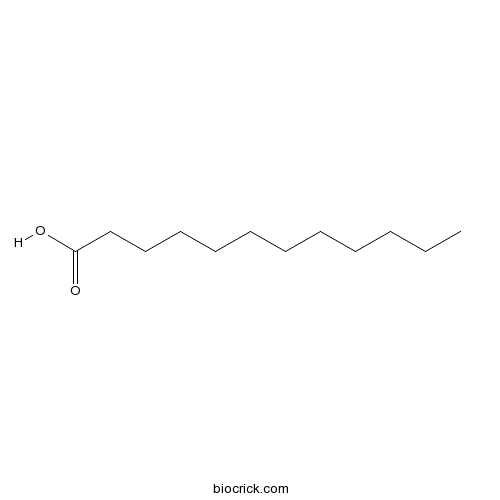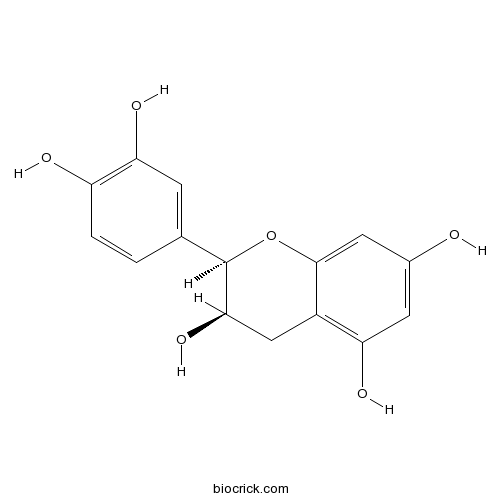Rubus parvifolius
Rubus parvifolius
1. The products in our compound library are selected from thousands of unique natural products; 2. It has the characteristics of diverse structure, diverse sources and wide coverage of activities; 3. Provide information on the activity of products from major journals, patents and research reports around the world, providing theoretical direction and research basis for further research and screening; 4. Free combination according to the type, source, target and disease of natural product; 5. The compound powder is placed in a covered tube and then discharged into a 10 x 10 cryostat; 6. Transport in ice pack or dry ice pack. Please store it at -20 °C as soon as possible after receiving the product, and use it as soon as possible after opening.
Natural products/compounds from Rubus parvifolius
- Cat.No. Product Name CAS Number COA
-
BCN2635
Lauric acid143-07-7
Instructions

-
BCN5597
Epicatechin490-46-0
Instructions

-
BCN4546
4-Hydroxybenzoic acid99-96-7
Instructions

Total Saponins of Rubus Parvifolius L. Exhibited Anti-Leukemia Effect in vivo through STAT3 and eIF4E Signaling Pathways.[Pubmed: 29752696]
To investigate the anti-leukemia effect of total saponins of Rubus parvifolius L. (TSRP) on K562 cell xenografts in nude mice and the mechanisms of action.
Triterpenoids from the roots of Rubus parvifolius.[Pubmed: 27478101]
Two new oleanane-type triterpenoids, parvifolactone A (1) and rubuside P (2), together with 11 known triterpenoids, fupenzic acid (3), 18,19-seco,2α,3α-dihydroxyl-19-oxo-urs-11,13(18)-dien-28-oic acid (4), euscaphic acid (5), maslinic acid (6), 1β- hydroxyeuscaphic acid (7), 2α,3α,19α,23-tetrahydroxyolean-12-en-28-oic acid (8), 2α,3β,19α,23-tetrahydroxyurs-12-en-28-oic acid (9), glucosyl pinfaensate (10), rubuside J (11), 2α,3α,19α,23-tetrahydroxyurs-12-en-24,28-dioic acid (12), and 2α,3β,19α- trihydroxyurs-12-en-23,28-dioic acid (13), were isolated from the roots of Rubus parvifolius.
Sanguiin H-6, a constituent of Rubus parvifolius L., inhibits receptor activator of nuclear factor-κB ligand-induced osteoclastogenesis and bone resorption in vitro and prevents tumor necrosis factor-α-induced osteoclast formation in vivo.[Pubmed: 27288918]
Osteoclasts are multinucleated bone-resorbing cells that differentiate in response to receptor activator of nuclear factor-κB (NF-κB) ligand (RANKL). Enhanced osteoclastogenesis contributes to bone diseases, such as osteoporosis and rheumatoid arthritis. Rubus parvifolius L. is traditionally used as an herbal medicine for rheumatism; however, its detailed chemical composition and the molecular mechanisms responsible for its biological action have not been elucidated.
Host plants of Empria sawflies (Hymenoptera, Tenthredinidae) in Japan include Rhododendron (Ericaceae).[Pubmed: 26623797]
New host plant records are given for six Empria species from Japan. They are Rosa multiflora [Rosaceae] for E. honshuana Prous & Heidemaa, 2011, Rubus sp. [Rosaceae] for E. japonica Heidemaa & Prous, 2011, Geum japonicum and G. calthifolium var. nipponicum [Rosaceae] for E. loktini Ermolenko, 1971, Rosa multiflora, Potentilla indica and probably Rubus parvifolius [Rosaceae] for E. quadrimaculata Takeuchi, 1952, Rhododendron molle subsp. japonicum [Ericaceae] for E. takeuchii Prous & Heidemaa, 2011, and Geum japonicum and Filipendula camtschatica [Rosaceae] for E. tridentis Lee & Ryu, 1996. This is the first record of Ericaceae as a host plant of Empria. The mode of host shifts in the evolution of Empria is inferred by using a phylogenetic hypothesis proposed by Prous et al. (2011a).
Novel microsatellite markers acquired from Rubus coreanus Miq. and cross-amplification in other Rubus species.[Pubmed: 25867828]
The Rubus genus consists of more than 600 species that are distributed globally. Only a few Rubus species, including raspberries and blueberries, have been domesticated. Genetic diversity within and between Rubus species is an important resource for breeding programs. We developed genomic microsatellite markers using an SSR-enriched R. coreanus library to study the diversity of the Rubus species. Microsatellite motifs were discovered in 546 of 646 unique clones, and a dinucleotide repeat was the most frequent (75.3%) type of repeat. From 97 microsatellite loci with reproducible amplicons, we acquired 29 polymorphic microsatellite markers in the Rubus coreanus collection. The transferability values ranged from 59.8% to 84% across six Rubus species, and Rubus parvifolius had the highest transferability value (84%). The average number of alleles and the polymorphism information content were 5.7 and 0.541, respectively, in the R. coreanus collection. The diversity index of R. coreanus was similar to the values reported for other Rubus species. A phylogenetic dendrogram based on SSR profiles revealed that seven Rubus species could be allocated to three groups, and that R. coreanus was genetically close to Rubus crataegifolius (mountain berry). These new microsatellite markers might prove useful in studies of the genetic diversity, population structure, and evolutionary relationships among Rubus species.
[Chemical constituents from roots of Rubus parvifolius].[Pubmed: 25470966]
To investigate the chemical constituents from the roots of Rubus parvifolius.
Saponins from Rubus parvifolius L. induce apoptosis in human chronic myeloid leukemia cells through AMPK activation and STAT3 inhibition.[Pubmed: 25041018]
Saponins are a major active component for the traditional Chinese medicine, Rubus parvifolius L., which has shown clear antitumor activities. However, the specific effects and mechanisms of saponins of Rubus parvifolius L. (SRP) remain unclear with regard to human chronic myeloid leukemia cells. The aim of this study was to investigate inhibition of proliferation and apoptosis induction effects of SRP in K562 cells and further elucidate its regulatory mechanisms.
Rubus parvifolius L. inhibited the growth of leukemia K562 cells in vitro and in vivo.[Pubmed: 24242132]
To determine the antiproliferative activity of Rubus parvifolius L. (RP) extract, its medicinal serum and RP total saponins (RPTS) against K562 cells in vitro and in vivo.


